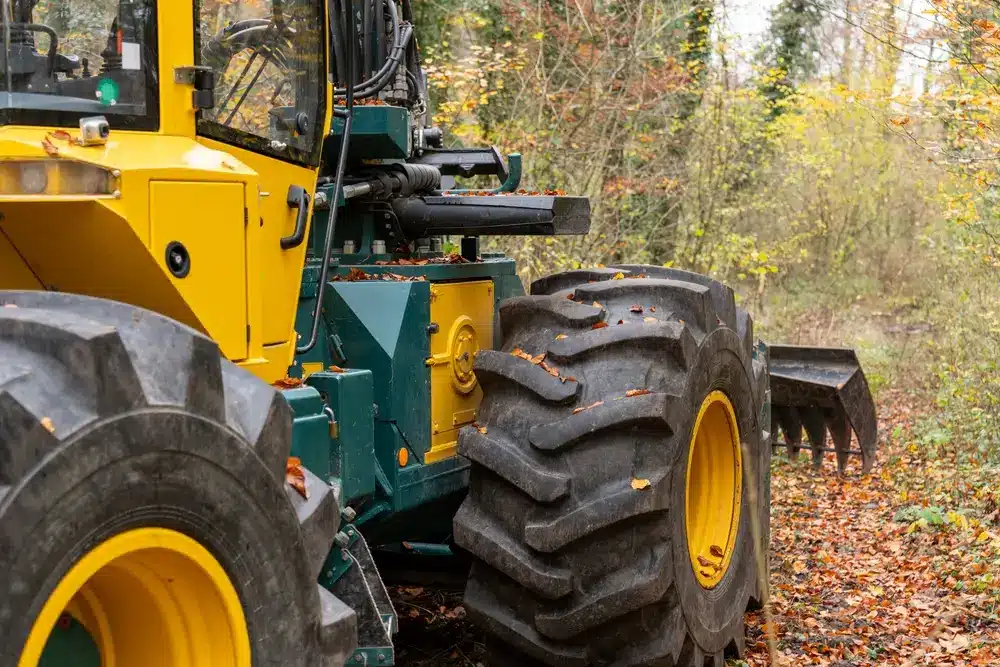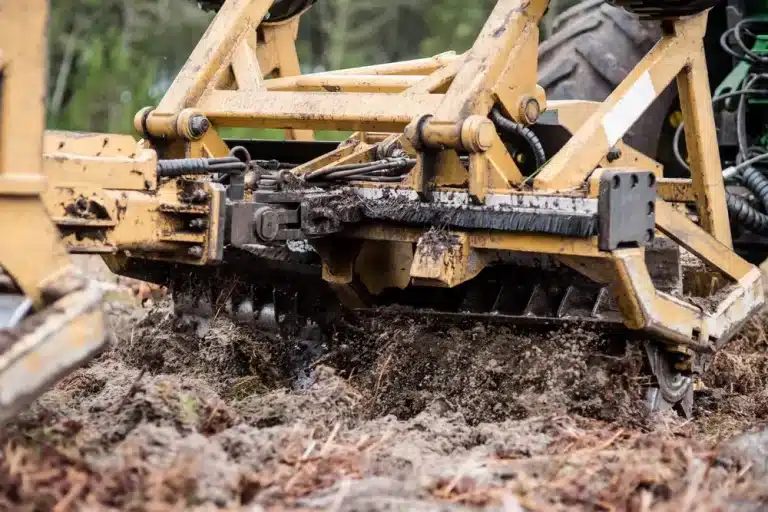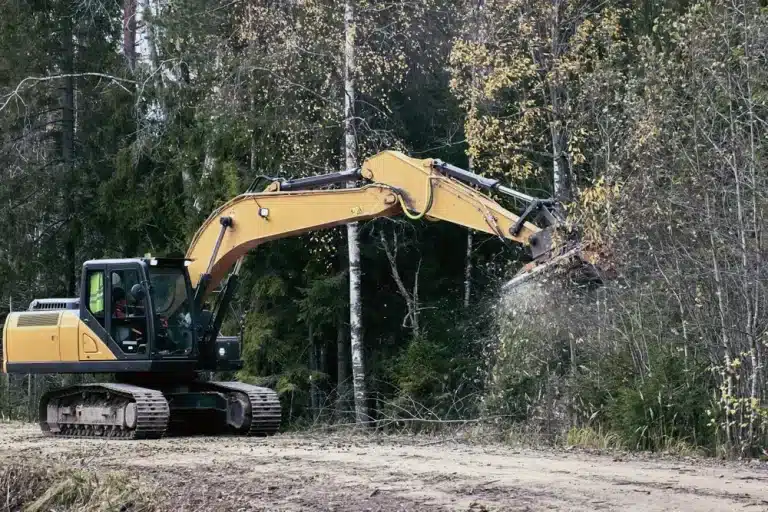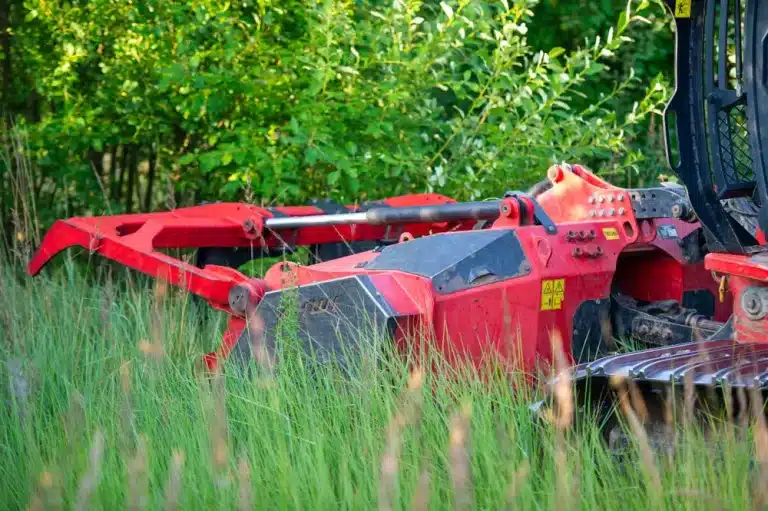What you may not realize is that incorrect application of forestry mulchers in the forests outside Toulouse has resulted in a spike in accidents and ecological damage in the last ten years. With the special blend of Mediterranean and Atlantic ecosystems in southwestern France, adhering to the proper safety standards isn’t just about personal protection, it’s about protecting delicate woodland habitats. In this post, we’ll decode must-know safety standards specific to forestry mulchers in Toulouse.
What is forestry mulching?
Forestry mulching is a land clearing method where one piece of equipment mulches brush, trees and grass to the ground. This mulch remains on the ground and serves as coverage. Rather than replace the dirt, as the old ways of bulldozers push or pull up roots, mulching leaves it in place and prevents erosion. It keeps the ground warmer in cold months and cooler when it’s hot, which helps the soil stay healthy. The mulch blanket protects the topsoil from wind and rain reducing soil loss.
Forestry mulchers utilize various combinations of rotary drums or blades to break down wood and vegetation. These machines compare to work differently. Some have heads that spin vertically, some horizontally. Both styles have their own hazards, so identifying the style on site assists in maintaining safe operations. These beasts can grind away at work such as brush clearing, fire breaks, lot cleaning, selective thinning and even power line right-of-ways.
One huge bonus, of course, is that forestry mulching equates to less equipment on the project. Or to drag in bulldozers, chainsaws or trucks to transport piles. The mulcher takes care of it all in one pass. This makes it an excellent option for sites where you want to save time and reduce soil disturbance. Forestry mulching performs optimally on terrain under 25 tons of vegetation or under 100 trees per hectare. A mulcher can clear anywhere from 1.2 to 5 acres in a single day, although this varies with the terrain and brush density.
Because these machines are powerful and fast, safety is a primary focus. Spinning blades and flying wood chips are endangering employees. That’s why machine type and safety steps matter for every job.
Safety standards overview
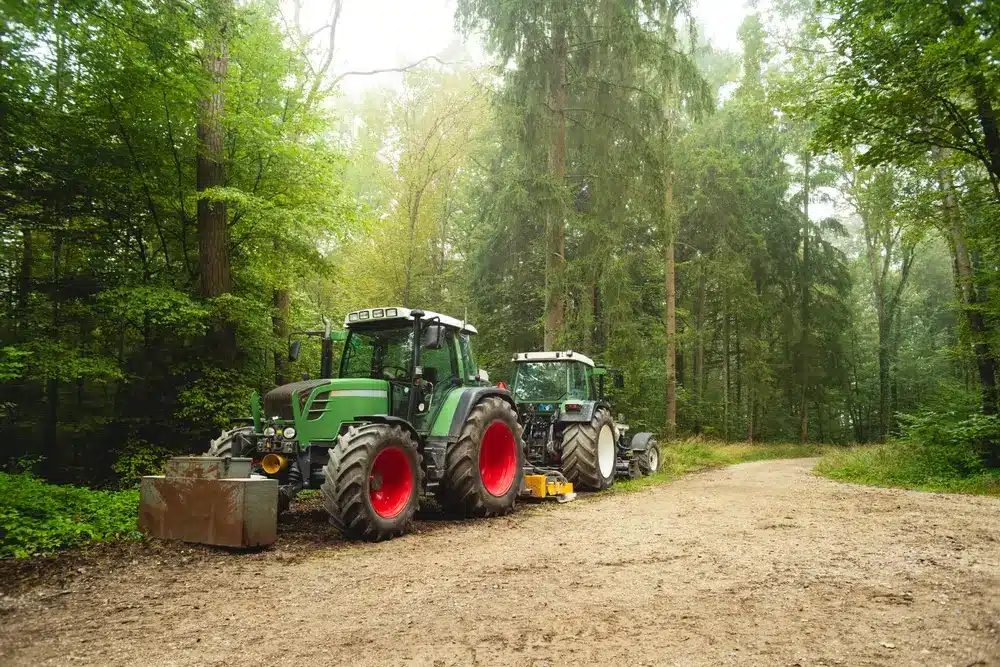
Forestry mulching requires strict safety standards established by both national and local regulations. These regulations provide the minimum threshold for safe labor and assist in reducing hazards to every laborer. The maker’s manual must read before using. It provides critical actions for how to operate and repair the mulcher correctly. Ignoring the manufacturer’s instructions can void your warranty or cause injury.
A checklist prevents operators from overlooking important steps. It should equal all policies and optimal schemes for the work. Below are some main standards to keep in mind:
- Keep 90 meters (300 feet) away from people while working.
- Protect the driver from flying debris with a skid steer equipped with a shatterproof cab door.
- Use protective equipment, like hard hats, gloves, boots, eye and ear protection.
- Confirm that all guards and shields are mounted and locked.
- Inspect the site for hazards, such as rocks, stumps or wires, prior to beginning the work.
- Be aware of the vegetation type and density to clear, as dense brush or trees add increased hazards.
- Be aware of the weather. High winds, rain or poor sight make work unsafe.
- Maintain the machine! Inspect oil, filters, blades and bolts frequently.
- Efforts to prevent soil erosion and maintain hard earth. Try mats, slow speed, or other measures for weak soil.
- Maintain tools and machinery clean and unclogged or leak-free.
Operators should turn these standards into a complete checklist for every job. This keeps no safety step overlooked. For global teams, unambiguous training in a common tongue is crucial. Good safety doesn’t just comply with regulations, it makes people, terrain, and equipment secure.
Key safety features
Forestry mulchers require robust safety mechanisms to reduce hazards for operators and bystanders. These machines employ high-speed blades to slice and shred trees and brush, so guarding and controls are essential. Protective housing encases the blades to prevent debris from being ejected. Shields and guards are a necessity, particularly on machines with pendulum blades. These assist prevent inadvertent contact with the blade. They prevent chips and dust from bouncing back towards the cab or operator, as well.
Emergency stop buttons, for example, are now a basic need on all forestry mulchers. They allow the operator to shut down the machine quickly if they detect a problem. They need to be within easy reach from the operator’s seat. A few utilize load-sensing for certain machines. These systems detect excess brush or wood and decelerate or halt the blades to avoid overloading. This reduces jams, damage and accidents.
High-visibility markings and warning labels near moving parts, sharp edges, and pinch points. These cautions inform the operator and bystanders of dangers, such as whirling blades and crushing points, even with a quick look. Labels with simple icons and bright colors are most effective and can be seen at a glance in any lighting. Pressure relief valves are a key safety part for hydraulics, preventing hoses and pumps from exploding under excessive pressure.
A protective cab or operator enclosure is recommended or even mandatory in certain areas. This protective shield protects the driver from noise and debris. The cab needs to have reinforced windows and be constructed to withstand flying wood or rocks.
Regular inspections count just as much as integrated safety features. That translates into checking guards, shields, the emergency stop and blade condition prior to every use. Frequent drills and practice help, too. A trained operator will see hazards earlier and recognize how to leverage the safety features correctly.
Importance of safety standards
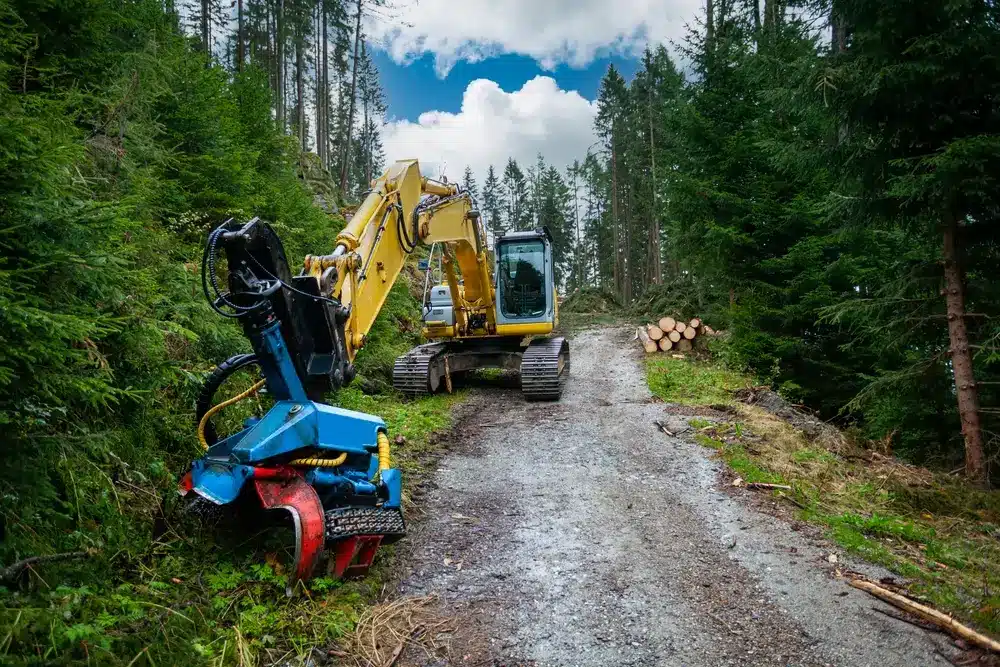
Forestry mulchers have sharp, fast-spinning components and powerful engines. Without safety standards, accidents can occur quickly. When workers break rules, they can get hurt, sometimes badly. Even minor oversights, such as forgetting your helmet or gloves, can result in nasty cuts, fractures or much more. For instance, standing too near the mulcher’s spinning drum can expose operators to flying debris or machine kickback. That is why it is smart to have safety standards – such as standing away and employing shields – to decrease these dangers.
Employers and operators get sued if they disregards safety standards. Laws in many nations require employers to do this. If somebody injures themselves and you didn’t do it right, the company could be fined or face lawsuits. By observing safety standards, companies demonstrate that they value their workforces, not to mention sidestep expensive litigation. For example, frequent training and obvious warnings help us all understand what actions we should take and should not take. That will simplify things for operators working with less concern of running afoul of the law.
Machines last longer and work better when safety routines are in place. When operators bypass checks or dismiss warning lights, minor issues can escalate into major failures. Stuff like checking oil levels, tightening bolts, and cleaning parts all keeps your mulcher running smooth. Well-maintained mulchers perform better and are less likely to break down during a job. That just saves you money and keeps projects on time.
Key benefits of following safety standards:
- Fewer injuries and deaths on the job site
- Lower legal and insurance costs for companies
- Longer machine life and less downtime
- Better worker confidence and morale
Benefits of following standards
Adhering to safety regulations with forestry mulchers isn’t just a compliance task. These standards assist in reducing the likelihood of injuries and expensive downtime. If safety steps are specific, everyone understands what to do. This reduces the confusion that causes crashes. A safe work site = less downtime, which means jobs get done faster and without interruption. For instance, if an operator understands how to properly inspect machine guards and maintain a safe distance, they’re less prone to injure themselves on moving parts or flying debris. This keeps teams on schedule and prevents delays from accident investigations or equipment repairs.
With such standards, operators develop confidence in their equipment and the decisions they make daily. When people understand the rules exist for a purpose, they are more comfortable and can operate with concentration. This manifests itself in the speed and quality with which the land gets cleared. Average forestry mulchers clear 1 to 4 acres per day and with less surprises, that pace remains consistent. Confident teams don’t make mistakes that prematurely wear out machines.
Standards help save money on repairs, too. Machines indeed last longer if you use them the right way. For instance, mulchers can process trees as large as 24 inches. Applying them within these boundaries, and not overstressing, results in less breakdowns and smaller repair bills. This is crucial because forestry mulching typically requires just one machine, reducing expenses by eliminating stages such as hauling and site cleanup.
Adhering to safety standards demonstrates to clients and local agencies that the crew is passionate about doing it right. This cultivated trust, which is great for business. Consumers want land cleared, quick – sometimes in a day, and they want to know it’s done safe. Mulching will hold soil in place, prevent erosion and is best for plots with sub 25 tons of brush per acre.
Types of mulchers and safety needs
Forestry mulchers come in three main types: deck, disc, and drum mulchers. Deck mulchers utilize swinging blades and are optimal for light brush or grass. Disc and drum mulchers tend to be skid steer attachments as well. Disc mulchers are quick, with drum mulchers employing a bent-axis piston motor for additional torque. Mulchers further vary by ROT head rotation. Certain heads rotate on a vertical axis, others on a horizontal. Your mulcher choice depends on the task — terrain, brush density and tree diameter all come into play.
Larger mulchers require additional power and expertise. They typically require a hydraulic output of 30–50 GPM and a working pressure as high as 4,200 psi. Skid steer mulchers require a minimum of 60 horsepower and a shatterproof cab door for safety purposes. Certain high-flow types slice up to 1.5 meters wide and can process trees up to 35 centimetres in diameter. Operators of these big machines must be highly trained and follow stringent controls.
| Mulcher Type | Mount Type | Key Safety Needs | Unique Hazards |
| Deck Mulcher | Tractor | Basic PPE, guard shields | Blade kickback, thrown debris |
| Disc Mulcher | Skid Steer | Shatterproof cab, 300-ft exclusion | High debris projection |
| Drum Mulcher | Skid Steer | Advanced PPE, operator training | Machine instability |
| Drum/Disc Mulcher | Excavator | Fall protection, stability checks | Tipping, wide swing area |
- Always wear PPE: Hard hat, eye & ear protection, gloves, high-visibility vest, steel boots & face shield to all mulchers
- Safety procedures:.* Guard all bystanders 90 m away.. * Large mulchers should only be used by trained operators. *Watch out for machine instability on slopes. * Check hydraulic lines and shields prior to operation.. * Utilize guards and shields to prevent flying debris.
